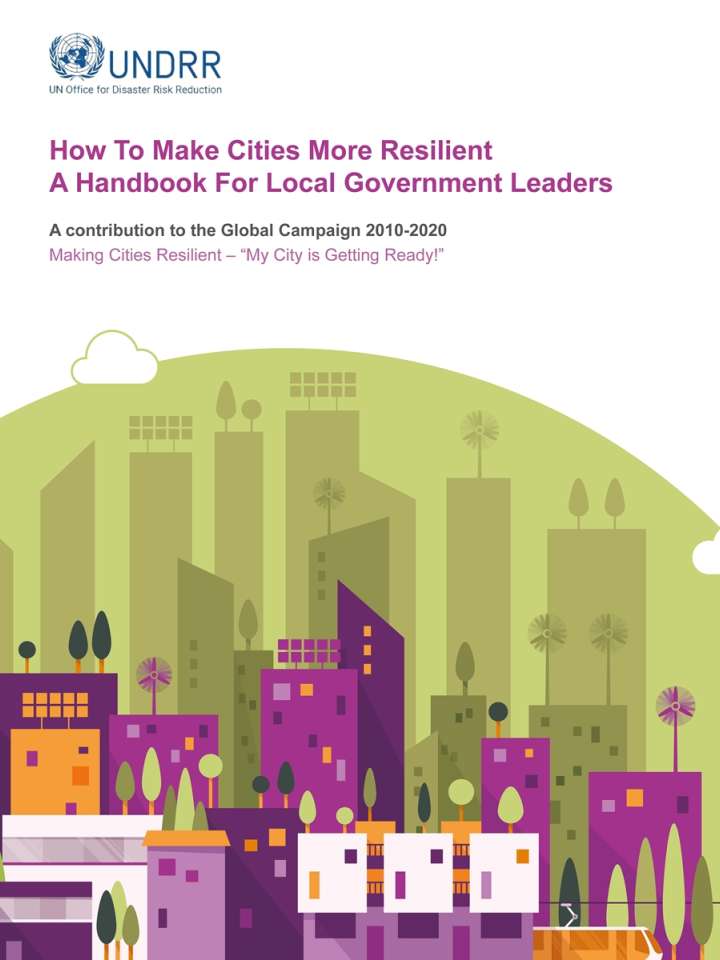How to make cities more resilient: a handbook for local government leaders (2017)
A contribution to the Global Campaign 2010-2020. Making Cities Resilient – “My City is Getting Ready!”
With over half the world’s population now living in urban areas, making cities safer is a long-term challenge that must be achieved. Cities are engines of national growth and dynamic in their governance systems and capacities. Throughout history, disaster events have disrupted urban life. An extreme and changing climate, earthquakes, and emergencies triggered by man-made hazards are increasingly putting pressure on people and threatening the prosperity of cities.
This Handbook for Local Government Leaders provides mayors, governors, councillors and others with a generic framework for risk reduction and points to good practices and tools that are already being applied in different cities for that purpose. It responds to the following key questions: WHY building disaster resilience is beneficial; WHAT kind of strategies and actions are required; and HOW to go about the task.
Because cities, towns and municipalities differ in size, social, economic and cultural profiles and exposure to risk, each one will approach the tasks differently.
With the adoption of the Sendai Framework for Disaster Risk Reduction in 2015, this second edition of the Handbook (2017) responds to the call for better access to information, knowledge resources, and tools to effectively deal with the impacts of natural hazards and climate change. It provides an overview of key strategies and actions as part of an overall sustainable urban development strategy.
This Handbook contains: an introductory part; the main body elaborating on the rationale for investing in disaster risk reduction (DRR) and resilience; the Ten Essentials for Making Cities Resilient; the five steps to develop a process called the Resilience Building Cycle; and annexes containing useful resources for Handbook users, besides of several practical examples that illustrate how local governments, together with stakeholders and partners, are able to achieve resilience.
